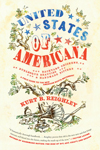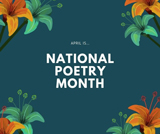 It would be misleading to say I couldn’t have written United States of Americana: Backyard Chickens, Burlesque Beauties & Handmade Bitters – A Field Guide to the New American Roots Movement anyplace else but the Pacific Northwest. After all, one of the main reasons I chose this so-called career was my belief that I can practice my craft anyplace. But it would’ve been a hell of a lot harder to conceptualize this book, let alone conduct the research and get it into the hands of people I believe will appreciate it, if I called anyplace else home.
It would be misleading to say I couldn’t have written United States of Americana: Backyard Chickens, Burlesque Beauties & Handmade Bitters – A Field Guide to the New American Roots Movement anyplace else but the Pacific Northwest. After all, one of the main reasons I chose this so-called career was my belief that I can practice my craft anyplace. But it would’ve been a hell of a lot harder to conceptualize this book, let alone conduct the research and get it into the hands of people I believe will appreciate it, if I called anyplace else home.
Let’s back up for a moment: From 1989 to 1996, I lived—in the fullest Auntie Mame/Agnes Gooch sense—in New York City. Occasionally, longtime friends in the Big Apple still ask, “Why did you move to Seattle?” I explain to them that my “new” home offers me the best of both worlds: the cosmopolitan flair of a big city coupled with the intimacy of the Virginia and Indiana hamlets where I’d resided as a youth. That small-town willingness to help your friends and neighbors, augmented with the access to the-best-of-the-best a major metropolis offers, created a sort of perfect storm in which to write United States of Americana.
 Part of my good fortune stemmed from the region’s character, that unique blend of a slower pace of life combined with a tendency towards early adoption. On a more practical level, representatives from our corner of the country turned out to be key players in every subject I addressed. Heritage clothing companies Filson, Pendelton, West Coast Shoe Company, Centralia Knitting Mills and White’s Boots are all located here. The burlesque and circus subcultures have boomed in Seattle, Portland and the surrounding areas. Canning Across America started here. Heck, there are only three or four notable manufacturers of small batch, handmade bitters operating at a national level, and one of them turned out to be my neighbor!
Part of my good fortune stemmed from the region’s character, that unique blend of a slower pace of life combined with a tendency towards early adoption. On a more practical level, representatives from our corner of the country turned out to be key players in every subject I addressed. Heritage clothing companies Filson, Pendelton, West Coast Shoe Company, Centralia Knitting Mills and White’s Boots are all located here. The burlesque and circus subcultures have boomed in Seattle, Portland and the surrounding areas. Canning Across America started here. Heck, there are only three or four notable manufacturers of small batch, handmade bitters operating at a national level, and one of them turned out to be my neighbor!
What this meant was that I could do research first-hand, then reach out to heavy hitters in other parts of the country and, armed with trusted recommendations, ask for their assistance, too. Had I not already proven my mettle to the folks who make the plaid shirts and hunting jackets that inspire them, I doubt some of the New York fashionistas featured in the “Rugged Exterior” chapter would’ve made time to talk with me. As a consequence, the community of people involved in my book spread from coast to coast, which only reinforced my convictions that while the Pacific Northwest was a hotbed for the topics I addressed, a larger study of the “New American Roots Movement” would definitely resonate nationwide.
Now that I’m promoting my book, I’m more grateful than ever that it evolved in the Pacific Northwest. Local media outlets such as The Stranger and No Depression gave me an early forum to explore ideas that evolved into key components of the text. And I have so many new friends, from cobblers to contortionists, that I can enlist to help spread the word. Because, if there’s one thing I learned while writing United States of Americana, it’s that as long as the maker consistently nurtures his or her ties within a community, a quality product that celebrates traditional values while also embracing new ideas and technology can easily reach a national audience without compromising its regional identity. Even the entrenched New Yorkers in my life can grasp that.



I find it so interesting that there is now all this attention being paid to a way of life, or parts of this way of life, that is still just everyday living for a lot of us. For example, I grew up with no electricity or pressurized indoor plumbing (we did have a pitcher pump). I’m 34. My parents lived that way not as “back-to-the-landers,” but out of economic necessity. Now, I live with my husband in a 300-square-foot house with a huge vegetable garden and backyard chickens, not because it’s hip, but out of economic necessity. I hang clothes out on the line because I don’t own a dryer. It’s funny and odd to me that these kinds of things, which I see as very normal, indeed, for me, “the” norm, are objects of study and are considered either hip or quaint. I guess it’s good these “older” technologies and techniques are getting some attention now. They sure do still work. I once talked with people who just plain didn’t believe (because of my age, I guess) that I grew up with an outhouse.
This is a great point, Amanda. Definitely something to remember as we celebrate this kind of living. My family and I are some of those that have jumped on this bandwagon in all kinds of ways. In defense of it, I have to say it’s pretty neat that my daughters are on a first-name basis with the source of chicken nuggets. I’m guessing you probably didn’t name your chickens, though, did you?
Amanda, you raise a valid point, and one of the arguments I make in the book is that much of the appeal of these goods & practices to folks who didn’t grow up with them is the dawning realization that they would be wise to embrace them soon… why? Out of economic necessity, as well as for the sake of the environment, peace of mind, etc.
Thank you, Kurt! Good to see and good to know. You’re right, Jamie, we didn’t name our chickens…I also should mention that, although we live the “simpler life” (sometimes I have to laugh at that title!) for economic reasons, we also do find quite a bit of satisfaction in doing a lot of things for ourselves. It is definitely a combination of factors that keeps us doing these kinds of things. I guess what might make me different from some others in my generation is that I grew up along these lines and never really stopped, so it’s not new to me, nor am I really going “back to” it; I’ve done lots of it all along.